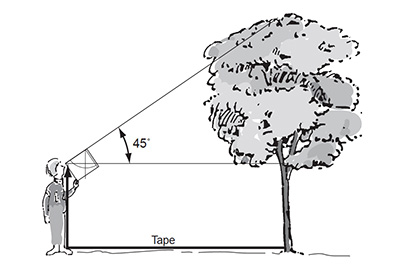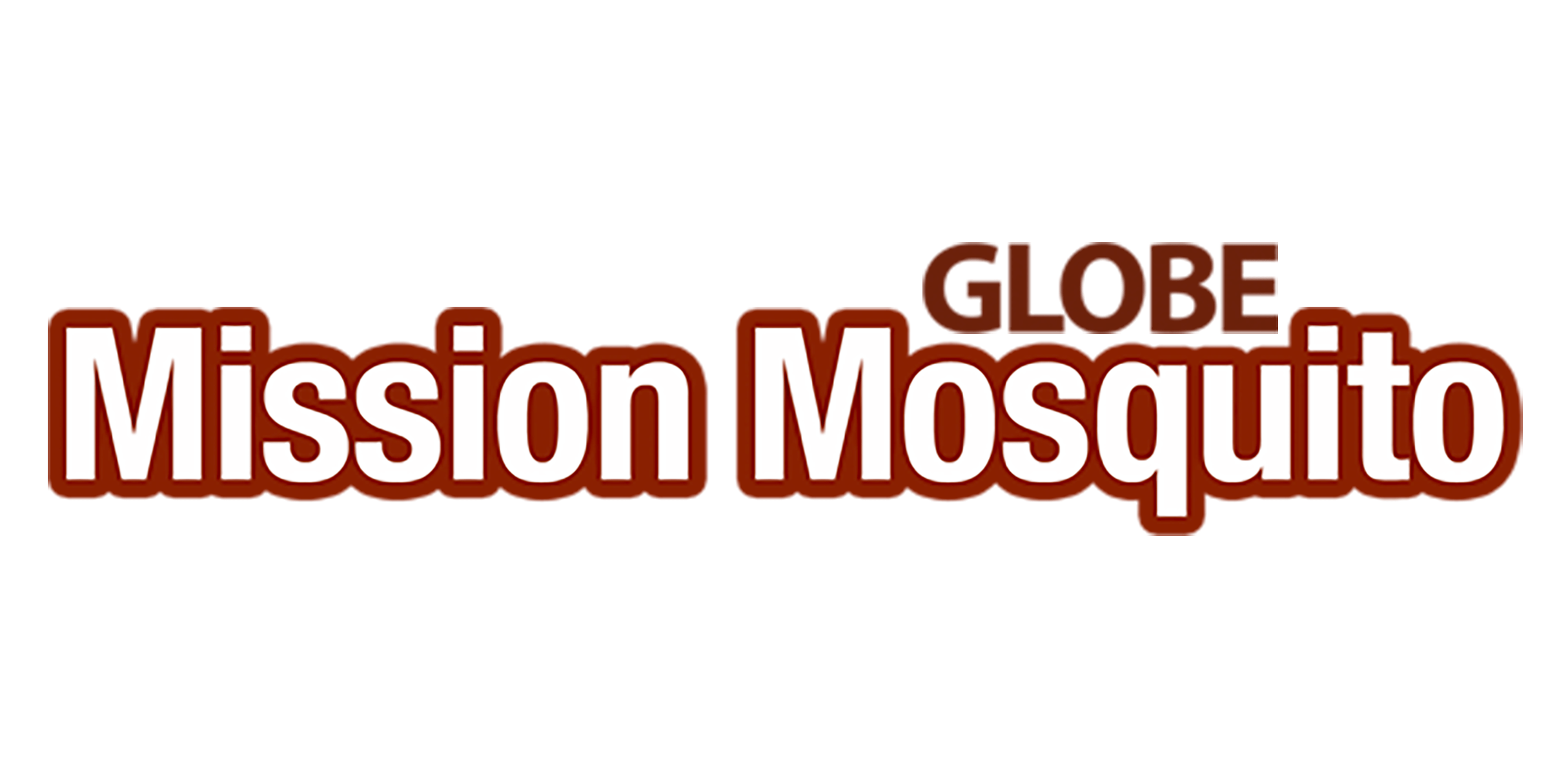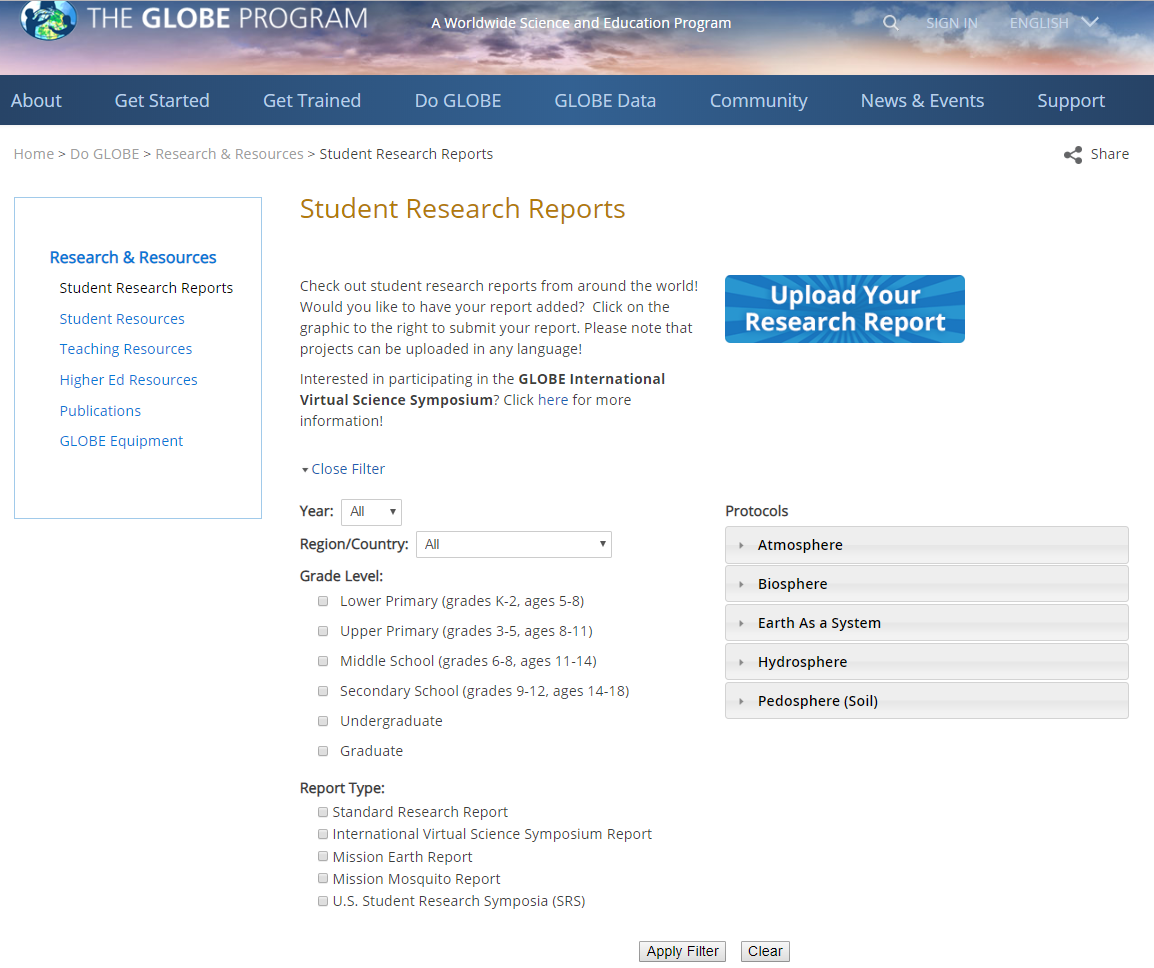GLOBE Connections
GLOBE Biosphere - Additional Resources
The GLOBE resources on this page will support exploration of My NASA Data phenomena. These include campaigns, eTraining, pacing guides, and how to find related student projects.
eTraining
For online eTraining on GLOBE biosphere protocols which can be used to explore biosphere phenomena, visit the GLOBE eTraining page.
Introduction to Biosphere- Learn how to conduct GLOBE’s biosphere protocols so that the data you collect is of appropriate precision and accuracy. You will learn about the MUC classification system used to classify land cover at our study site, and get an overview of the biometry and phenology field procedures. You will also review the steps you will take to upload your observations to the GLOBE database and visualize data using the GLOBE Visualization system.
In order to enter data for a protocol, you will need to complete the Introduction to Biosphere module and the protocol module. In addition, there may be supporting protocols required.
Campaigns
GLOBE campaigns are a great way to explore different phenomena. Students have the opportunity to use GLOBE protocols and submit data in conjunction with students around the world. These data will contribute to the goals of the campaign in addition to facilitating student learning.

Trees Around the GLOBE Student Research Campaign
The Trees Around the GLOBE Student Research Campaign commenced on September 15, 2018 in conjunction with NASA's ICESat-2 satellite launch on the same date at 6:02am PDT. This campaign is a student research campaign focusing on tree height - one of the measurements conducted by the ICESat-2 mission. Tree height is not just a measurement - it is a gateway to understanding many things about the environment. The structure of tree canopies, the 3D arrangement of individual trees, has a huge effect on how ecosystems function and cycle through carbon, water, and nutrients. Source: (GLOBE Website)
Additional measurements that can be made in association with the campaign include:
Land Cover Classification, Green Up / Green Down, and Carbon Cycle, Air Temperature, Surface Temperature, and Soil Temperature.
Mission Mosquito

This new field campaign engages citizen scientists of all ages in monitoring changes in the frequency, range and distribution of potential disease vector mosquitoes. Observations are reported using the GLOBE Observer Mosquito Habitat Mapper mobile app. These data can be analyzed to explore a variety of research questions. The human health connection of this campaign engages a new and broader audience by providing opportunities for citizen scientists to contribute to NASA science, while helping their local communities.
Pacing Guides
GLOBE Educator One-Week Pacing guides are designed to facilitate implementation of The GLOBE Program's GLOBE Observer app tools. Each guide includes:
- A guiding question
- Contact information
- NGSS standards alignment
- Background information
- Five sequenced activities (One is using on of The GLBOE Program's GLOBE Observer tools.)
- Additional resources.
Each of the five sequenced activities includes assessment options and a question that relates to the guiding question. There are some GLOBE Educator One-Week Pacing Guides related to the biosphere. These are:
- Mosquito Habitat - Grades 6-12
- Plant Phenology - Grades 4-8
- Trees and the Carbon Cycle - Grades 6-12
Student Projects
Find student projects related to the phenomenon you are exploring. These projects can be used as background research for younger students, or as models for student projects. There is a search filter available to find the projects you would be most interested in seeing. Students can also submit their own reports on the same page.

You can filter on the following:
- Year
- Region/Country
- Grade Level
- Protocol - all GLOBE protocols are available
- Report Type - The report type options are different forums available for students to submit their work.
There are also mechanisms for students to participate in the International Virtual Science Symposium and Student Research Symposia.

